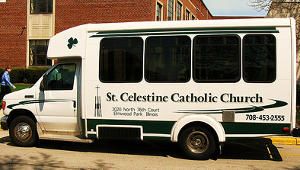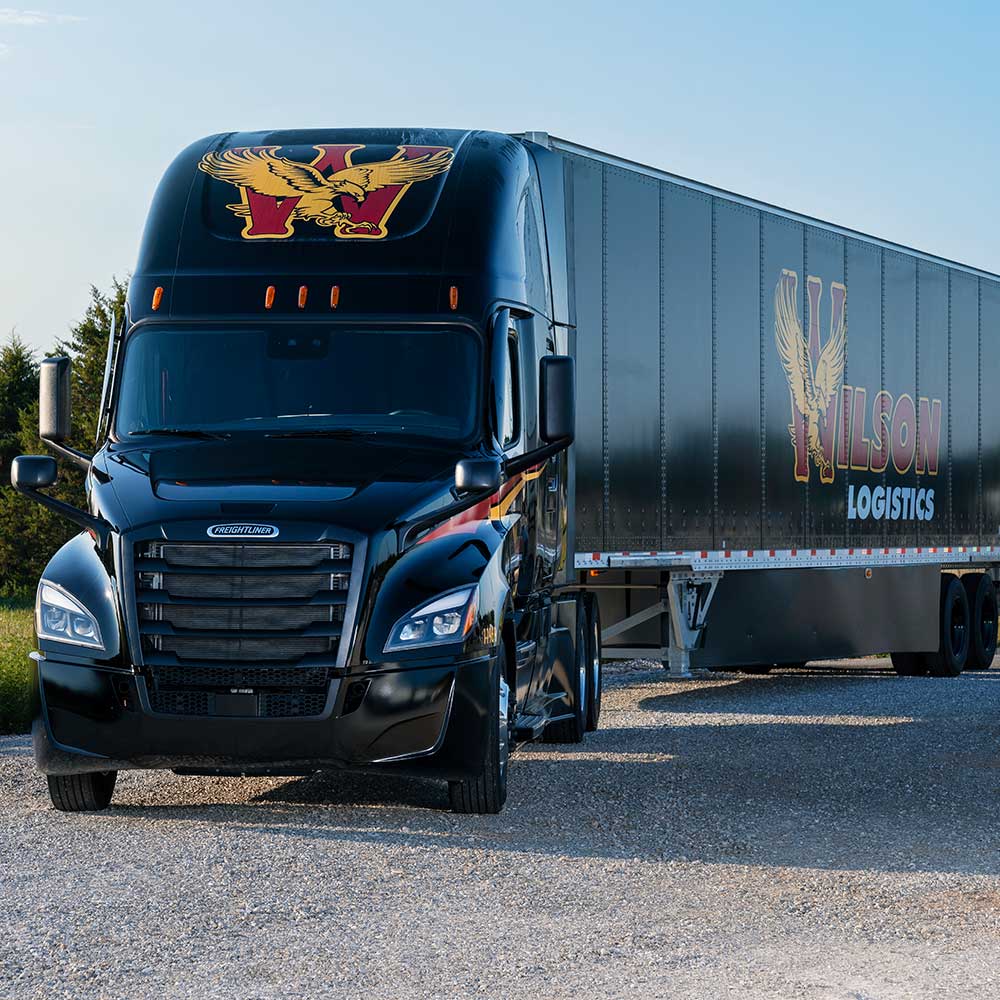Review Questions - Click On The Picture To Begin...

- Class B - Single vehicle with a GVWR of 26,001 or more pounds, or any such vehicle towing another not in excess of 10,000 pounds
- Class C - Single vehicle with a GVWR of at least 10,001 pounds but less than 20,001 pounds
- Class A - Combination vehicles - GCWR of 26,001 or more pounds providing the GVWR of the vehicle being towed is in excess of 10,000 pounds
- Class D - Single vehicle with a GVWR of less than 16,001 pounds
Quote From The CDL Manual:
The classes of licenses are as follows:
- Class A - Combination vehicles - GCWR* of 26,001 or more pounds providing the GVWR of the vehicle being towed is in excess of 10,000 pounds.
- Class B - Single vehicle with a GVWR* of 26,001 or more pounds, or any such vehicle towing another not in excess of 10,000 pounds.
- Class C - Single vehicle with a GVWR* of at least 16,001 pounds but less than 26,001 pounds.
- Class D - Single vehicle with a GVWR* of less than 16,001 pounds.
*GCWR - Gross Combination Weight Rating
*GVWR - Gross Vehicle Weight Rating
TruckingTruth's Advice:
Be sure to memorize the different CDL classes, including the various weight limits for each, as at least one question almost always comes up during the state exam.
- Air Brakes, General Knowledge, Double/Triple trailers
- General Knowledge, Air Brakes, Combination Vehicles
- General Knowledge, Passenger, Hazardous Materials
- Air Brakes, Combination Vehicles, Passenger
Quote From The CDL Manual:
Computerized Written Knowledge Exam - The computerized written knowledge exam consists of standardized multiple-choice questions. In addition, specialized exams are added if you wish to operate any of the following vehicles:
- Vehicles with air brakes (also requires a skills and road test)
- Combination vehicles
- Double or triple trailers
- Vehicles carrying hazardous materials
- Passenger-carrying vehicles
- School buses
- Tanker vehicles
TruckingTruth's Advice:
For truck drivers, it's most important to be able to pass the General Knowledge, Air Brakes, and Combination Vehicles exams first. Once you are able to pass those exams, it's highly recommended you also take the Tanker, Double/Triple Trailers, Passenger, and Hazardous Materials exams.
- An operator of a passenger carrying vehicle designed to transport 16 or more passengers, including the driver
- An operator of any vehicle transporting hazardous materials of a quantity that would require placarding
- All of these require a DOT medical card
- An operator of a commercial vehicle with a gross vehicle weight rating (GVWR) or a gross combination weight rating (GCWR) of 10,001 pounds or more (both private and for hire)
Quote From The CDL Manual:
You will need to carry a medical card with you if:
- Operate a commercial vehicle with a gross vehicle weight rating (GVWR) or a gross combination weight rating (GCWR) of 10,001 pounds or more in the furtherance of a commercial enterprise (private or for hire); or
- Operate a passenger carrying vehicle designed to transport 16 or more passengers including the driver; or
- Operate any vehicle transporting hazardous materials of a quantity that would require placarding.
- 7
- 9
- 5
- 4
Quote From The CDL Manual:
There are seven special CDL endorsements and one restriction that require testing. In addition, drivers who do not pass the air brake portion of the exams are restricted to driving vehicles without air brakes.
The endorsements are:
- 1. Charter Bus (C)
- 2. Combination Tank and Hazardous Materials (X)
- 3. Double/Triple Trailers (T)
- 4. Passenger Vehicles (P)
- 5. School Bus Endorsement (S)
- 6. Tank Vehicles (N)
- 7. Vehicles Carrying Hazardous Materials (H)
Restrictions:
1. Vehicle Without Air Brakes (L-Restriction)
TruckingTruth's Advice:
We highly recommend that everyone get all endorsements available because:
- You don't want to restrict your opportunities
- The tests are fairly quick, simple, and inexpensive
- You're already going through the process of learning the materials anyhow
So make sure you get all of the endorsements.
- Combination vehicles with a GCWR of 26,001 or more pounds providing the GVWR of the vehicle being towed is in excess of 10,000 pounds
- Single vehicle with a GVWR of less than 16,001 pounds
- Single vehicle with a GVWR of 26,001 or more pounds, or any such vehicle towing another not in excess of 10,000 pounds
- Single vehicle with a GVWR of at least 16,001 pounds but less than 26,001 pounds
Quote From The CDL Manual:
- Class A Combination vehicles GCWR* of 26,001 or more pounds providing the GVWR of the vehicle being towed is in excess of 10,000 pounds.
- Class B Single vehicle with a GVWR* of 26,001 or more pounds, or any such vehicle towing another not in excess of 10,000 pounds.
- Class C Single vehicle with a GVWR* of at least 16,001 pounds but less than 26,001 pounds.
- Class D Single vehicle with a GVWR* of less than 16,001 pounds.
*GCWR Gross Combination Weight Rating
*GVWR Gross Vehicle Weight Rating
- Combination vehicles with a GCWR of 26,001 or more pounds providing the GVWR of the vehicle being towed is in excess of 10,000 pounds
- Single vehicle with a GVWR of at least 16,001 pounds but less than 26,001 pounds
- Single vehicle with a GVWR of 26,001 or more pounds, or any such vehicle towing another not in excess of 10,000 pounds
- Single vehicle with a GVWR of less than 16,001 pound
Quote From The CDL Manual:
- Class A Combination vehicles GCWR* of 26,001 or more pounds providing the GVWR of the vehicle being towed is in excess of 10,000 pounds.
- Class B Single vehicle with a GVWR* of 26,001 or more pounds, or any such vehicle towing another not in excess of 10,000 pounds.
- Class C Single vehicle with a GVWR* of at least 16,001 pounds but less than 26,001 pounds.
- Class D Single vehicle with a GVWR* of less than 16,001 pounds.
*GCWR Gross Combination Weight Rating
*GVWR Gross Vehicle Weight Rating
- Driving Exam
- Pre-Trip Inspection Exam
- Basic Control Skills Exam
- All of these exams must be taken
Quote From The CDL Manual:
After passing the written exam, some drivers are required to pass a skills and driving exam. The exam is divided into three parts:
- 1) The pre-trip inspection is conducted to determine whether the applicant knows how to inspect the vehicle to see if it is safe to drive. Drivers are asked to conduct a pre-trip inspection. The driver must explain to the examiner what is being inspected and why.
- 2) The basic control skills exam evaluates a driverʼs ability to use basic skills to control the vehicle. Applicants complete exercises on a course marked by lines, traffic cones or similar boundaries. The exercises test the driverʼs ability to move the vehicle forward, backward and through turning movements. Drivers are scored on how well they stay within the boundaries.
- 3) The driving exam tests the driverʼs ability to drive safely in a variety of on-road situations. The road test route may include left and right turns, intersections, railway crossings, curves, upgrades, downgrades, rural or semi-rural routes, multi-lane city streets and/or expressway driving.
TruckingTruth's Advice:
To obtain a CDL driving permit, all written exams must be passed. At that point, permit holders are able to drive commercial vehicles with the aid of a licensed CDL instructor who will help coach the student to pass the pre-trip, basic control, and driving exams at a later date.









 TT On Facebook
TT On Facebook